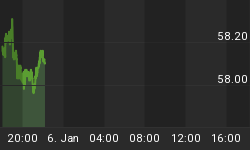What is the true value of gold? If one says 585 US dollars or 335 UK pounds, you may be getting near the answer but in the global world of depreciating fiat money, defining its value is like measuring yourself with a ruler whose inch scale is shrinking by the year. One year you are six feet tall, the next you are seven feet tall but you know you have not gained one inch in height!
I hope you get the idea, but one thing that is sure is that the value of gold is different across the board of currencies. As gold observers have noted, the yellow metal as been on a great move upwards for some months now. In terms of US dollars, many expect the next leg of the US dollar bear to resume and propel gold prices into quadruple digits. A mouth watering prospect, though somewhat tempered by the fact that those very same dollars are also rapidly declining in purchasing power.
But what of the British Pound, the currency that once ruled the waves and was under girded by an empire upon which the sun famously never set (until World War II made its maintenance uneconomic). Here is the price action of gold in pounds sterling for the last 16 years. To get the price of gold in pounds, simply multiply the value by 100.

As with the strong dollar in the late 1990s, gold suffered under the British pound and no wonder when the British government was busily selling off half the nation's stock of gold. It only transpired later that this was a not so blatant attempt to stave off a gold derivatives crisis brought on by the LTCM bankruptcy! Britain will regret this betrayal of true money when the energy-fiat crisis of this decade and the next begins to bite hard and they have to scramble to get it all back and more!
Also shown below is the exchange rate between the US dollar and the British pound for the same 16 years. From the exchange rate graph, it is clear that when the US dollar bear market began in 2001, you sold dollars and bought pounds. The 65-week moving average would have got you out in early in 2002 and you would have reversed that position about a year ago when the rate fell below the moving average.

Of course, an American investor in gold would have done the same thing by using a similar technique on their dollar-gold charts. From the sterling-gold chart, one can see that the UK gold bull began in 1999 although in a somewhat sluggish manner. Once can then see how gold broke out with a vengeance against the pound a year ago, as indeed it did against a host of other currencies worldwide. Comparing the two charts reveals a synchronicity. As gold exploded in price in the United Kingdom, the pound also declined as the US dollar began its larger degree rally around the same time. This is not a coincidence, but it doesn't explain everything about gold's surge in price.
Other factors worldwide are combining to forge this multi-decennial bull market in gold. Currency depreciation is one. Others include rising energy costs and decreasing reserve lifetimes of gold producers.
The question before holders of gold resident in Britain and indeed other countries inversely related to the US dollar is what to do next? The pound will undoubtedly strengthen significantly as the US dollar bear resumes. But we also know that gold will strengthen significantly as well but suffer some kind of friction in Britain as pounds increase in value against the dollar.
As ever it is a balancing act between relative valuations. One thing is for sure, holding US dollars do not seem to be the best option! This is a truncated version of an update to be sent out to subscribers that included recommended strategies for a pound-dollar-gold situation.
Roland Watson writes the investment newsletter The New Era Investor that can be purchased for an annual subscription of $99.
To view a sample copy of the New Era Investor newsletter, please go to www.newerainvestor.com and click on the "View Sample Issue Here" link to the right. Comments are invited by emailing the author at newerainvestor@yahoo.co.uk.
















